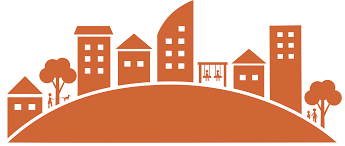In the middle of October, I joined in the AIM Day at Uppsala University, organised by the university Innovation Team. This day is an opening up of the university to businesses and institutions who want to pick at difficult questions with researchers. This year’s theme was Hållbara Städer (Sustainable Cities). This year it was in Swedish, and with my limited language abilities (disclaimer: I therefore might have missed some important points to many of the discussions), I joined in on some of their workshops.
Overall this day was an enlightening experience, where the necessity for transdisciplinary approaches to tricky questions, and collaborations across universities, civil society and public institutions, was abundantly clear. However, as a representative of the Climate Change Leadership Initiative (CCL), it was disappointing to see that the discussions did not want to grapple with the elephant in the room: the added complexity of climate change (and biodiversity loss) to social sustainability and development questions.
The first question I attended was one that struck at the core of a project CCL is working on at the moment: “Hur bygger vi tillit och vågar vi ta tillvara kraften i initiativ som vilar på religiös eller kulturell grund och möjliggör för olika sorters drivkrafter för ett områdes utveckling?” (How do we build trust and courage to harness power of initiatives driven by cultural or religious grounds? And that enable different kinds of driving forces for an area’s development?) posed by representatives of the Kommun. Joining me in this meeting were researchers from Centrum för forskning om religion och samhälle (CRS) , as well as employees of Upplandsidrottsförbund. It was positive to hear that this was being considered, in particular concerning a suburb of Uppsala that we are interested in working with.
“Hur kan konst bidra till att stärka identitet och skapa gemensamma rum i stadsmiljön och hur sker konstnärlig medverkan på bästa sätt genom hela planerings- och byggnadsprocessen?” (How can art help to strengthen identity and create common spaces in the urban environment? And how does artistic participation take place in the best way throughout the planning and building process?) posed by Region Gotland, was the second workshop I attended. Having very recently organised an interactive and artistic process in collaboration with Uppsala Art Museum, which was designed to enable residents of the city to explore how we think about the space of the non-human in urban environments, I was particularly excited by this discussion. Sadly, there did not seem to be shared interest in the role that the arts can play with the idea of the urban as a space for wilderness and other species. Though the conversation was fascinating in that we covered the role of graffiti to shape identities of the space and its residents, a very important facet I had not previously considered, it was disappointing that the conversation could not include how we might use artistic process and design to stretch the possibilities of urban space in times of climate change. This discussion highlights CCL’s concerns that processes of urban development continue to neglect the role of the city in mitigating species extinction and adapting to climate change.
The final two workshops I attended were similar discussions on social innovation and meeting spaces. The first, chaired by Coompanion Uppsala Län, wanted to discuss “Stödsystem för social innovation, särskilt inom hållbar stadsutveckling” (Support systems for social innovation, particularly within sustainable city development). The latter, chaired by Uppsalahem, covered “Sociala investeringsprojekt för barn och unga (Mötesplats Gottsunda)” (Social investment projects for children and youth (Meeting Place Gottsunda). By this point, my Swedish was fairly exhausted and my contributions to the discussion were in english. Our discussions touched upon vulnerable groups across the cities and regions and who should be the targets for support systems (could they be non-Swedish speakers?), neglect and social segregation were repeated here, and we were fairly stuck on the meaning of social innovation at points. A shining star from this discussion came from Idrottsförbundet who work closely in Gottsunda, and recounted an experience of engaging with women residents of the area. She told us that she was trying to understand what types of sports opportunities women living in Gottsunda wanted. She reached out to several contacts who then sent out a mass whatsapp message. Expecting only a handful of people to turn up, she was overwhelmed by the interest when 60 people joined the discussion. Looking at their feedback (which was largely written in Arabic), she found that generally residents did not want to attend meetings to discuss types of sports, but rather were happy to be messaged through this channel and told when and where dance classes or swimming opportunities, or other events, would occur. Understanding the different methods of engagement with different localities of Uppsala city is crucial for CCL’s work with civil society.
Over all AIM day was great fun. It was wonderful to meet so many colleagues working in similar areas of democracy and development. What struck me, though, was that we are not thinking strategically about climate change in all of these challenges. Trends of privatisation, or art and urban development, and (disrupted) investments in social innovation projects are turbulent and challenging changes. With the added complexity of climate change, and our responsibilities to act upon it, we must include strategic ways of engaging with these problems. I look forward to attending AIM Days in the future and continuing to be a thorn in the side of these discussions.


